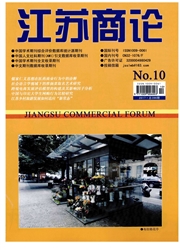

 中文摘要:
中文摘要:
企业行为影响着社会的进步和经济的发展,其推出新产品的频率也在不断变化着。最近人类动力学的发展给企业行为的分析提供了新的视角,本文统计了最近几年内在中国大陆上市汽车的上市时间,并进一步探讨其群体和个体层面上时间间隔在双对数坐标下的分布结构,以研究其背后的动力学特征。研究发现,前者服从指数为1.42的幂率分布,然而后者服从带有指数截断的幂率分布。显然群体和个体具有不同的分布特征,而这种混合特征可以归因于,对于个体动力学只是很少的偏差,但在群体动力学中,这些微小的偏差经过累加就变得巨大并最终造成幂率分布的不同。针对这一指数截断的幂率分布,本文设计了一个基于市场需求的产品上市动力学模型,这个模型可以和实证数据很好的拟合。
 英文摘要:
英文摘要:
Company behavior influences the development of the society and economic. The frequent of launching new producls is varying. Now the appearance of human dynamic gives a new view to analyze company behavior. In this paper, the statistic about launching time of new cars is analyzed. And it studies the distributed architecture of both group and individual behavior in log-log coordinate, which shows the dynamic character. The result indicates that the former follows power-low distribution with index 1.42, while the latter follows power law with exponential cutoff. Obviously, they have different distribution, and the reason is that the little deviation in individual behavior can become huge in group behavior. For power law with exponential cutoff, we design a dynamical model based on market demand, and the model fits the real evidence well.
 同期刊论文项目
同期刊论文项目
 同项目期刊论文
同项目期刊论文
 期刊信息
期刊信息
